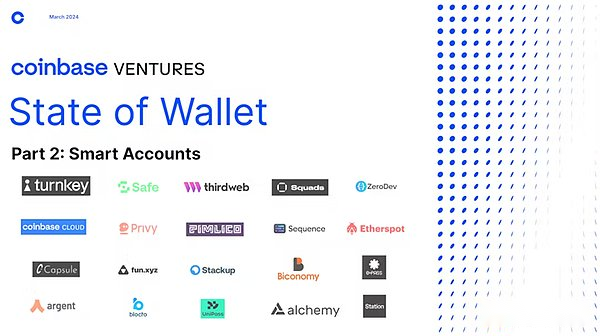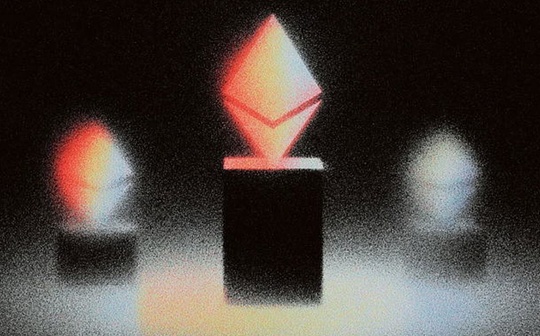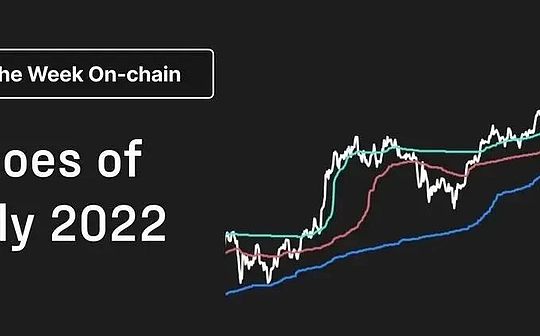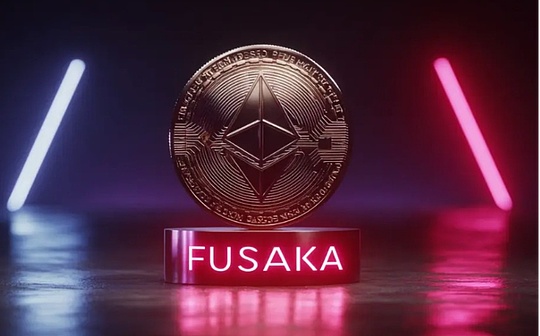
Author: Ryan Yi, Coinbase Ventures Investment Head; Translation: Bit Chain Vision Xiaozou
This article is a series of articles published by Coinbase Ventures investment in Ryan Yi, a part 2: Smart Accounts.Part 1 is Wallet Technologies, please refer to the previous article “>General Assembly of Wallet Technology Development Status “Essence

“Smart Account” (also known as “Smart Wallet”) -We defines it as a smart contract wallet (SCW) with “account abstraction” -has become the most concerned topic for encrypted developers.Account abstract (“AA”) was launched in the EVM ecosystem in the first quarter of 2023, and the adoption rate began to show an upward trend.This article will explain the value proposition of account abstraction, changes, and its impact on a wider ecosystem.
Points in this article:
-
AA defines the standard of meta trading so that users can transaction and implement transactions by third parties.
-
AA may bring a 10 -fold user experience by sponsoring GAS, packing transactions, and Passkey.
-
AA enables developers to try to get customers (new users) sponsorship.
-
The adoption rate of the ecosystem is rising and the attention is increasing.The value proposition is still “the best” (but not necessary), but with the optimization of technology/cost, the emergence of new use cases and entry education and publicity -AA may become an infrastructure that users must “have”.
1Summary of smart accounts
(1.AABasic knowledge
What isAAIntersection“Account Abstraction” (or ERC-4337) was released in the ETH / EVM ecosystem in the first quarter of 2023.AA defines a standard so that users can trade on Ethereum, but do not need to initiate ETH transactions (and execute by third parties).
Application instance: Users to create a transaction request to indicate the intention of buying a certain NFT, but the actual GAS and chain settlement is processed by a third party.
WhyAAVery important?Today, we have self -custody wallets (such as Coinbase Wallet) and MPC/Embedded Wallet.So far, SCW (Smart Contract Wallet) has interesting security functions (multiple signatures, expenditure restrictions) and non -security functions (batch transactions).limited.With AA, smart contract wallets have a new value proposition, because there is a path without GAS transactions, which is very meaningful for many applications, and L2 reduces SCW’s GAS cost problem.These SCWs are also called “smart accounts”.The community believes,AAFunction will helpdappbring10Double user experience, because of its following characteristics:
*Gassponsor:Users do not need to pay the GAS fee for the previous transactions to “load their wallets”.
*PasskeyTheUsers can use their apple/Google devices to sign a transaction.This will need to improve the ETH protocol level (EIP-7212).
*One -click transaction: A transaction sometimes needs to be multiple times“Clicked“However, these operations can be packed and tied together.
*Safety:Users do not need to save a complete set of notes, and notes can be divided between multiple keys/hosts.
(2.AAprocess
DAPP/Wallet Create a Userop, a data structure that can support any signature, describes trading and GAS logic.This userop can be sent to a set of nodes/network/related (relay) under a chain.For example, “I want to exchange this NFT”.
Bundler is a node for treating UserOps, which is similar to the blockbound builder under the chain.They are regarded as a wallet for trading on the chain because these trading packages are sent to global smart contracts called Entrypoint contracts, and the Entrypoint contract is responsible for coordinating execution and payment.
Entrypoint ensures that the wallet has sufficient funds to pay the GAS fee, and/or verify the Paymaster (if UserOps Gas wants to be sponsored).It also supports Bundler’s unpaid GAS from the account.If all logic checks are correct, the transaction will be executed on the chain and verification+execution is performed on the SCW contract.There are other optional additional components, such as signature aggregation.
ERC-4337 defines the above userop structure and Entrypoint interface.In addition, before ERC, there were some non -standardized implementation, but it effectively promoted similar product experience.In fact, this is a linked account with trusted Relayer settings.

(3) How to useAAIntersection
DAPP must enable this process in its applications and contracts.Generally, no matter who the developers are, they will start from the smart account level, and then specify the Bundler and Paymaster.Some options support the hybrid Bundler and Paymaster, and some options provide a complete solution.
In fact, DAPP developers may need a complete kit.The “AA” product is basically a “All-in-One” integrated developer product, which spans the life cycle under the chain (node, signature) and the chain (contract, GAS, key) life cycle.The market strategy of the “AA” provider is to provide a full set of “Bundler+ Paymaster+ Scw” as a single toolkit.Therefore, if you are a DAPP and you have locked the existing developer products, they may sell your AA tool package or their partner tool packs to you.
From the perspective of AA providers, they may start from their “core competitiveness” and then extend to other services:
-
Coinbase provides various products in this field, such as account abstraction tool bags, embedded wallets, service and smart wallets.
-
Bundler/Paymaster: The development platform that provides node services may initially tend to be bundler because it is a product near nodes.They may then support PayMaster and “Smart Wallet SDK”, which offers Bundler/Paymaster/Scwkit.
-
SCW: SAFE (former GNOSIS SAFE) is the leading supplier of signing more wallets.They now have a “AA SDK” that allows integration with other Bundler+Paymaster suppliers.
-
MPC wallet: companies like Privy may provide smart account tool packs through partners.
Economics will depend on the positioning of the supplier -although generally speaking, users will pay the GAS cost of UserOps (GAS fees are collected/broadcast to Bundler), and Paymaster can sponsor GAS in the client budget.The only business model today is as follows: below:
-
Percent fee:Users pay GAS fees in Userop -Bundler processing operation and charge fees
-
SaaSBag:The company will charge the development team at the end of the monthly total “product fee” to the development team based on the percentage called by the Bundler API and the previous GAS sponsorship.
So far, most of the “GAS sponsorship” plans are implemented through custom links.Although this is very popular in the short term, it will lead to poor flexibility, because each developer will need to adjust all cases -we hope to eventually become an open source form.
2, Intelligent account adoption
(1.AAWhat is the use?How is it adopted?
-
Gassponsor:This mode enables network participants except the end user to pay GAS fees.Smart account transactions may be slightly higher than the cost of self -managing wallet transactions, but they can get third -party subsidies.User transactions (such as login/bridge funds) can be paid by interested stakeholders.
-
One -click transaction:Users can use the session key to perform “one -login” (relative to multiple signature permits), and multiple calls for single transactions through batch processing. Various signature schemes support different devices to “sign” transactions through arbitrarily verifying logic.Only supports ECDSA signature wallets).
-
PasskeyTheUse SCW, Passkey (on Apple or Google devices) can sign a transaction for users.Users benefit from Apple’s security model (for example, biometrics, specific certifications of physical equipment).
(2.AAWhat is the current situation?
-
Total accounts: 3.2 million, UserOps Total: 12.7 million, Paymaster total GAS fee: $ 1.7 million
Total accounts refer to the number of SCW compatible with AA -they can be created automatically in the wallet interface or indirectly created through a partner application.The total number of UserOps is the number of transactions supported by AA.Paymaster total GAS fee is the total GAS fee paid by a third party.
-
Large -scale developers (such as Alchemy, Thirdweb, Circle) and emerging startups have begun to get involved in the AA field.

(3) What is it hinderedAAWhat is the development?
-
Analysis of cost benefits:
Intelligent account value proposition: GAS sponsorship and transaction packaging the current value proposition is “the best.”Over time, this will become more common. Web3 consumption application will become the mainstream. The “best” claim will also be transformed into “must have”, because if you want to meet these standards, consumers “user experience” will be “user experience”.The threshold will increase.
Compared with the cost of existing scale options: The current usual approach of consumers is to use self -managing wallets or MPC wallet -creating wallets is free. Users submit and sign transactions, but users pay GAS fees for each transaction.For SCW, the interaction through AA (via Bundler) is slower (legend is slow for 2-5 seconds), and the cost of large -scale deployment is another restricted factor.
Data show that on L2 (such as Base), the cost of each account is about 0.15-0.45 US dollars.Therefore, for a DAPP with 1 million users, it may be $ 15-45 million (the cost of each account on the ETH main network is about $ 7-10).These costs may decline with the arrival of future EIP (4844).
-
PasskeyAdoption:
As part of the encrypted user experience, Passkey is becoming more and more popular and more standardized -but in the ETH protocol layer, the verification cost is still high.EIP-7212 tries to solve this problem.
-
“Chicken and egg“Start coldly:
If a DAPP wants to provide sponsorship transactions, they may choose MPC wallets to create accounts for users, manage key, and then choose a private Relyer to pay GAS costs.There are currently no large -scale AA products and services, but once the cost becomes more affordable, the situation may change.The current status quo is that DAPP uses an MPC wallet to create accounts for users and manage keys, which is very troublesome for DAPP.Assuming that the cost of GAS declines, we expect MPC wallet suppliers to add support to AA in their development products.
-
Developer/ /Product education:
The first discussion of 4337 is highly technical. SCW/AA marketing needs to benefit from the perspective of product/user experience.Some AA -supported wallets can be connected to any DAPP, which makes it align with existing self -custody and MPC wallet.We hope that over time, self -hosting wallets can increase more support for SCW.
3, Impact of Smart Account Ecology System
(1.AAThe use of the use is looking up, but there is no breakthrough successful case.The product market is forming.
The two biggest problems that attract new users to DAPP are that users usually do not have the ability to pay for pre -configured wallets or initial transactions.Last year, the pre -configured wallet ushered in the outbreak time. Through simple social login/verification (no “connecting wallet button) button, the mobile phone application was realized, and the built -in MPC wallet was supported.The demand for initial transaction payment capabilities is still increasing, but we believe that for the following reasons, it is time for AA to shine.
-
The biggest obstacle to SCW is the GAS cost (on ETH L1).With L2, the cost has been greatly reduced. The cost of SCW transaction is much lower, but the cost of large -scale transaction is still high.
-
Developers are developing consumer applications for non -encrypted native users.Therefore, attracting users is more important.
-
GAS sponsorship is now very important, because the receiver of the transaction fee is the L2 team itself.For example, a L2 may be willing to sponsor the GAS fee for the selected DAPP, because they want to bring more transaction costs to their underlying sorters.
-
Technical trends like Passkey will be conducive to the use of smart accounts.Passkey (that is, Faceid Create Wallet+Signing Transaction) is an additional driving force for consumer user experience.
-
We look forward to the exploration of self -custody wallets to smart accounts.
We predict that when the cost decreases (EIP-7212, EIP-4844), the industry’s alignment of open source standards (relative to the closed Relayer mode), the study of the successful GAS subsidy plan, and the willingness and budget of DAPP developers to obtain usersWhen paying, the product market will be finally realized.
(2.AALet developers be able to experiment with customers (new users) sponsorship.
With the emergence of L2, the first step of user experience has been solved -the cost of transaction/GAS has been significantly improved.The next step is to open AA for developers, because users now want seamless transactions.
Our idea is that once the user logs in, they will use the application and start the concept of lifelong value (LTV).As long as the LTV is greater than CAC (customer acquisition cost), for developers, it is worth exploring CAC (such as GAS sponsorship) supported by AA.Any stakeholder who wants to sponsor the transaction on the chain can sponsor (whether it is L2 or DAPP).
DAPP POV: Thanks to the embedded MPC wallet, the obstacles of obtaining users from 0 to 1 have been greatly improved.AA should help build a “first chain transaction” bridge and eventually bring a real -time login experience (the previous X -pens transaction does not require GAS costs, no user experience for “every click operation”, no wallet settings).A early example is the concept like “asset guidance login” -DAPP will provide users with smart accounts and GAS/Dust sponsor of the first 5 transactions, because the DAPP knows that it will invest in the 6th transaction.Return.
(3.AAIt is a first -mover game. The technical difference is not the only difference, but theGTM/From the perspective of example, the difference.
Because the technical configuration is open source, there is no major technical differences in smart accounts (Paymaster, Bundler, SCW).The difference is that we decide how to route.For example, because each transaction can only have one Paymaster, it is determined by the transaction coordinator.
The goal of the “AA” supplier is similar to all development platforms, that is, the possession, and be a bridge between users and DAPP.The point of view is that as long as AA suppliers have some relationships, they can find creative profitable methods (for example, the layered SaaS of DAPP or transaction -based income).
In addition to product positioning, the way to win is to define the “CAC” story of how to build a smart account.The selling point of the “smart account” may be to show the LTV/CAC story- “The user spends 1 cents per transaction, but your DAPP will earn $ 3 per trading.” For example, if a DAPP is created by a smart account, a DAPP will be created with a smart account.New users can immediately trade (no key, no GAS), and the cost related to SCW (deployment, function call, etc.) is higher, but this will be offset and surpassing the comprehensive life cycle value of new users.
(4.AAMay help connect“EachdappOne wallet“and“Web3Homepage“Related episodes.
So far, the self -custody wallet has been developed and constructed in the direction of the “Web3 Homepage”. Users can use a wallet to access all DAPPs (collecting, owning, sending, receiving, bridge, etc.).
The recent trend of Web3 consumers points to the direction of “each DAPP” supported by the MPC wallet.The user will download a mobile application, which is only provided and used in the DAPP.If the user uses the same embedded wallet provider (in the background) in multiple DAPPs, the embedded wallet provider can link the wallet based on the “chain” based on the public data identifier and merge it into a single interface.EssenceFor example, if the user uses the same email login in multiple DAPPs, you can uniformly see the wallets in these DAPPs.
Suppose there is a safe, reliable, and simple way to “connect” the address together, and the smart account architecture can help unify the above two threads by allowing key signatures and transaction coordination of wallets.
-
Self -hosting wallets will be able to connect to other wallets controlled by users, and retain the “homepage” interface experience, while supporting users to manage multiple wallets.
-
Embedded wallets support the user’s “under -chain connection”, but users can only control the wallet on the basis of each DAPP.Users can export the embedded wallet key and use AA to connect these wallets to the chain.This helps the embedded wallet transition from the “underneath” to the “chain connection”, thereby generating a global embedded wallet controlled by users.
In other words, AA wallets may be most suitable for single network use cases.For DAPP that allows multiple networks, the troubles that must be deployed to the SCW of multiple networks may not be worth it.Today, the development and adoption of AA are mainly concentrated on EVM, but other networks (such as Solana) are also investing in AA (such as Squads Protocol).
(5) Smart accounts are still in early stages, but they are becoming more mature.
All parts of the “smart account” infrastructure are ready, but the market timing is still an important factor.
Standardization (ERC-4337) was only implemented at the beginning of this year, and L2 only began to get attention in the second quarter of 2023.
Self -hosting wallets such as coinbase wallet and Trust wallet have begun to provide smart account products.
The universal practice of DAPP is still using self -host or MPC wallet (this is good enough). The separation between wallets, sponsorship transactions and DAPP makes benefits and is not obvious.There are a large number of consumer applications on the web3 chain, and finally change the login process supported by consumers supported by smart accounts, from “best” to “must have.”So far, although the concept of sponsorship has brought “free value -added” behavior, it has not yet fully appeared.
Before deploying to a smart account, Passkey still needs to be mature and perfect.
(6) Standards are promoting the consistency promotion of the ecosystemAAIt has a great role in adoption.
Many “GAS sponsorship” projects have always been achieved by using custom chain.If there is no standard, many DAPPs will follow this setting, which will cause the path to be narrower, because each developer needs to adjust their settings according to the use cases.Since this setting cannot be universal, each contract needs to support Relayer (Relayer → contract → user), and because the contract call is related, the transaction may be interrupted.
Now that the standard has been determined, the ecosystem participants can be agreed on how to build them together.As for whether the smart account will strictly follow the ERC-4337 specifications, or whether there will be modified plug-in/specifications (or even new EIP), there is no conclusion, but this concept should follow some of the standard variants.Looking forward to the future, the main advantage is the standardization definition of meta transactions.This will help promote the benefits of the entire industry to the benefits of smart accounts and create the best practice for the development of its developers and infrastructure providers (for example, developers can choose between 10 different Bundler).








